Tracing the history of art, one has seen painters slowly but surely move away over the ages from ‘literal representations’, from a focus on ‘realism’ towards a more abstract, ‘personal’ form of expression. This has, over time, found a willing and hugely appreciative audience and yet when this movement towards the abstract is mirrored in the world of the performing arts, specifically dance, audiences seem hugely unprepared. What are your reactions to that?
Let me start by saying that one should not discount the fact that in the case of art, the movement away from the literal was forced, in large part, due to the advent of the camera and photography.
An analogy between the visual art and dance, that’s a whole essay in itself. The fact of the matter is that the history of contemporizing visual art is much longer than what’s been happening in dance. Even if narrowly, in the Indian context, one were to look at Ravi Varma as a contemporary or new form of creative expression within the visual arts, then that’s already much older than what Chandralekha started doing with dance in the 1950s and 60s.
Also, contrary to what you feel, there are people within the world of the visual art also who have an inability to view the abstract or anything that challenges easy perception. Even in the West, we have people who prefer to view a Van Gogh or a Rembrandt and can’t deal with Rothko. In the same way in India, there are people who prefer a Tanjore painting, something iconographic rather than something edgy. So there’s definitely a need for the audiences to shift or grow along with the art form.
Having said that, specifically with respect to dance, I understand that many people are not comfortable with the notion of viewing art as science. But that is very much the space within which I operate. My work is specifically research-oriented, it’s not so much about expressing a story. It’s another kind of process I follow.
So, for the audience, like Chandra always said, “I am willing to meet you half-way,” but are you willing to move as well? And I think that one of the big problems is that we have all become so lazy. We are very good at reading up new technologies, reading about writers that interest us but still when it comes to dance, there’s an expectation that it has to leap up and entertain us.
There’s also this false premise that dance cannot be intellectual. People always say to me like it’s a dirty word that my work is “Intellectual”. My response to that is, “Yes, I am not interested in doing something ‘unintellectual’ if it means doing something that asks no questions, something that does not challenge comfortable notions. The sense of discomfort with my work is really this; for the first time the audience is in a space where there are no references, nothing to hold on to. But it’s your job as an audience to do some preparation, some thinking, else “Be prepared to be lost.” And these references don’t have to be from dance at all. The references could be from anything visual, from Math, from Music, from this physical body of ours. We have become so unaware of our own physical anatomy, something which all of us have - this living, moving, breathing form. Why have we become so unable to know that, to be able to activate new ways of seeing it.
I understand that many people are not comfortable with the notion of viewing art as science. But that is very much the space within which I operate. My work is specifically research-oriented, it’s not so much about expressing a story. It’s another kind of process I follow
I remember Chandralekha commenting once that the purpose of her dance was not to entertain, but perhaps to provoke, to make you uncomfortable. What would you say about your practice?
I don't think that’s entirely true. Her intent was never to create discomfort but to truly create a situation where the audience could go beyond their own bodies and experience some kind of upliftment, either through the aesthetics of her work, through the sheer physicality of it or perhaps through the power of her imagery. Her intent was always to move the audiences and never really to provoke. The discomfort was some kind of a by-product that the audiences experienced but it was never part of the intent.
In many ways, I think Chandra was far more generous than I am. I am quite happy to provoke. But it’s not so much a blatant need to provoke, as it is a provocation which is intrinsic to my work. I am very interested in creating tension and I truly believe in using this tension as a mode of communication. I am not at all interested in creating a cosy work, where you can sit down for a while and then step out for a nice dinner. I am truly interested in creating an alertness in the viewer and so I recognize that this is not for everybody. It is only for someone who can enter the structural worlds of my work, someone who can empathize with what’s going on with the body. There are so many layers through which one can receive the work. When I reflect on my work, I feel, I am more willing to be the provocateur and less interested in being popular.
Can art evolve to a point where it no longer needs an audience? Especially in a work like yours which is so personally charged, which is really a self-exploration more than anything else.
Yes and No. I mean, if you ask a Carnatic musician, “Do you need an audience?”, when he’s practicing at home, he doesn’t need an audience. But then he does need an audience when he performs. If you were to say he’s trying to communicate with his audience through his performance, then so am I. At the end of the day, I am trying to earn a living as an artiste. I would be very happy if someone would say to me, “Carry on with your research.” I often thought, in fact, in the last couple of years that I would be really very happy to not have to perform for anybody. I would be very happy to create a model where the audience could come to watch me in my studio and not at a performance venue.
But you know, we are still a very product-driven economy, even in the arts. Besides, nobody’s going to pay you to just do research without an end product. People often throw the word ‘elite’ at me in a dismissive kind of way. And I reject that. When we were at the biennale this year, it was not the elite biennale crowd which was coming in to watch my work. It was the very local, everyday Kochi crowd which was coming in, not just for one day but on three or four days to see our performance. And therefore, elite is what a platform makes of it. Elitism creeps in because of the kind of crowd that a space attracts. The Kochi biennale has allowed one to buy a single ticket for Rs100 and watch 96 artists. This is one of the biggest successes of the biennale. I spent a whole day with my auto driver in Kochi viewing the exhibits and he would come in and watch everything with me. There’s a big space between the artiste and the audience in India that needs to be dealt with and I don’t think we are dealing with it enough.
What does ‘slowing down’ allow an artiste to explore?
It allows for a lot of detail. Detail, that is otherwise lost. So, if you watch say a film, where there are hundreds of frames in a few seconds and someone asks you, “Did you see that cat which crossed the road ahead of the car?”, what would you say? No. “Then what would you do?” An editor would then slow things down patiently frame-by-frame to catch things which may have been missed. Something similar can happen in dance as well.
In the context of ‘slowing down’, I always have to talk about Chandra. The notion of slowing down was gifted to me through my years of working with her. She had already begun exploring the notion of slowing down in her work even before I got excited about it. Even in a Bharatanatyam adavu, what happens when one has to slow it down, almost interminably? What happens when one has to slow down a Yoga asana and perform it over five minutes? What happens is that one becomes aware of so many minute occurrences within the body and that was the idea with which Chandra began her processes of slowing down.
For myself, I would say slowing down has a slightly different focus. Early in my work, I spent many years trying to understand what is the body without movement. What is the ‘static’ body? It took me years to retrace from where I had left off with Chandra to a stage where I was very interested in the actual starting point of movement. When people describe my work as “Reductionism”, “Slowing down”, I don’t quite agree. For me ‘movement’ is the speeding up. Any movement, fast or slow, all of it is speed as opposed to the static. For me, while in my work, the external manifestation of movement is slow, there’s a tremendous internal processing that’s going on. It’s never a dull and easy slowness. While an arm is moving, this elbow is doing something else, this foot on the ground is beginning to consider a movement and there’s a tremendous tension in the rest of the body. It’s a lot of technical work to understand and to be able to control movement at that speed.
It’s very difficult and can take many years. Just like dancers train a lot to move very fast, dancers also need to train a lot to move very slowly. And I think that’s my interest. I have never been very interested in dynamic things. I do everything slowly, even my living.
What’s your take on ambiguity? Why do audiences (and in turn so many of the dance critics!) seem so eternally uncomfortable with that which is not clear, something which could be ‘this’ or ‘that’. Isn’t ambiguity very much part of all our lives and yet when it comes to the performing arts, we shy away from it.
Ambiguity isn’t a deliberate part of my consciousness when I am conceptualizing my work. Nevertheless, to respond to the question, I don’t know if the problem is so much with ambiguity as it is with the need to understand for an audience. We have this innate need to understand everything. It it’s a film, we have to understand the narrative. We have been so conditioned here in India, especially in dance, because in Bharatanatyam we can understand it or at least we think we can understand it. There’s a story, the nayika is doing something which can be explained. Even the jati is within a certain structure. It’s important for the arms to be held in a certain way in an adavu, so we recognize it, understand it. And all of these recognizable attributes give us comfort.
There are so many layers to this notion of what we understand and what we don’t that this un-understanding has become so problematic because quite honestly it makes people feel a bit stupid. And people don’t like feeling that way. People like to feel that they’ve got it. And when that doesn’t happen, then it becomes a problem. Well, there are few who are quite comfortable with the fact that they haven’t got it but they’ve still seen something they liked. But for most people, being lost within something causes discomfort. Philosophy unsettles many people because many philosophers don’t provide pat answers. Things are not handed down on a platter. But somehow when it comes to the performing arts, it’s the duty of the dancer to provide the answers. Why?
People always say to me like it’s a dirty word that my work is “Intellectual”. My response to that is, “Yes, I am not interested in doing something ‘unintellectual’ if it means doing something that asks no questions, something that does not challenge comfortable notions. The sense of discomfort with my work is really this; for the first time the audience is in a space where there are no references, nothing to hold on to. But it’s your job as an audience to do some preparation, some thinking, else ‘be prepared to be lost’

And could you speak about the role of the ‘body’ in your work?
Right through an artistic career, my work started with and continues to deal with exploring the possibilities of the body and the possibility of creating a new and authentic language with the body. I never will repeat a movement in my practice that someone taught me. An intrinsic part of my practice is creating new methodologies, in understanding my body better and better. So, at that level, I am not thinking if my audiences are going to get it or not. I’m only thinking up to this point in my career, if I’ve understood something about the internal connection of the spaces within my body, now where do I want to take it next. That’s my only concern and focus. That’s the way I am thinking. I have given up long back worrying about whether someone is going to get it or not. Especially in a city like this, where there’s hardly anybody who’s interested in my work. It’s because my artistic practice is so driven by my own need to understand my body and to share it with the people who work with me that the environment ceases to matter.
At the same time, Chennai is home for me, the place I chose to bring up my children. Though not many people see it that way, Bharatanatyam is the reason for my work to exist, the source of my departure. I have never learnt Western forms of dance. I completely reject the notion of studying contemporary techniques in dance from the West. My research has started from Bharatanatyam and continues to interrogate Bharatanatyam. The fact that the Bharatanatyam community is not at all interested in it is not something I can control and hence worry about.
Many people, especially artistes, opine that if there was a universal language, music would perhaps be that. Can dance ever aspire to be a universal language of expression?
To all of these things, whether it is music, whether it is dance or whether it is literature, to say something is universal is not really true. In my opinion, humanity is universal. To some people, the arts are universal, all of the arts. For some people, they’re not. It’s the same reason we have things like racism and xenophobia. Because, some people are able to see the humanity in every human being and some are not.
I think any body of music which feels like it it is the highest form of music or it doesn’t need to learn from or engage with other forms of music across the world, or to even acknowledge the existence of these other forms, cannot be universal. The idea of universality is only as large as we are as a humanity I think. In an idealistic world, a utopian world, the arts could be universal. But then, I think one should move away from these generalizations. I think we can only have meaningful and layered conversations about the arts if we are willing to accept something about specificity. And I think that’s the case for a lot of things.
Interviewed by Ashwin Prabhu
4 comments Comments






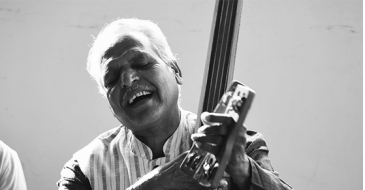
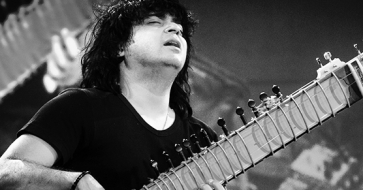
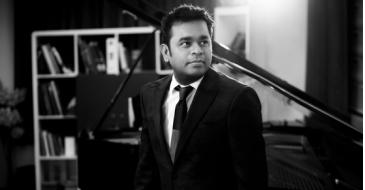
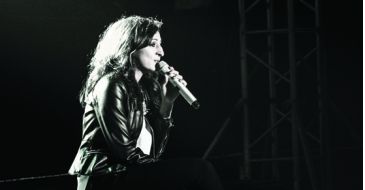
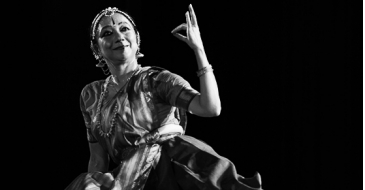
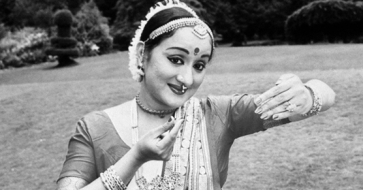
Yashika
May 17, 2017
Sidharth Iyer
May 04, 2017
Arjun
May 03, 2017
Vijaya
May 03, 2017